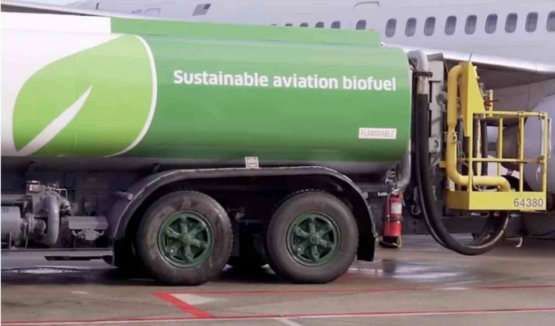Honeywell’s UOP eFiningTM technology produces low-carbon sustainable aviation fuel (SAF) immediately. At its second US e-fuels facility, HIF Global will use the new technology to make e-SAF.
Synthetic e-fuels, sometimes called electrofuels, can replace fossil fuels. E-fuels use green hydrogen (made in electrolysers from renewable energy and water) and carbon dioxide (CO2) to make e-methanol, which may be transformed into a variety of sustainable fuels like e-SAF, e-gasoline, and e-diesel.
UOP eFining from Honeywell converts e-methanol to e-SAF reliably and at scale. Efficient technique produces high-yield e-SAF at lower cost than comparable technologies. Honeywell UOP eFining reduces GHG emissions by 88% compared to traditional jet fuel. e-SAF may be combined with conventional jet fuel to replace it without changing aircraft technology or fuel infrastructure.
Honeywell has unveiled their newest generation of SAF technology.
“As a leader in renewable fuel technology, Honeywell recognizes that creating technologies that use new feedstocks is vital to long-term decarbonisation of the aviation sector,” said Lucian Boldea, President and CEO of Honeywell Performance Materials and solutions.
SAF production with plentiful CO2 is a market-changing opportunity. Honeywell now has various pathways to market for renewable fuels, including SAF, thanks to UOP eFining and Ecofining.

“United strongly supports the development of new technologies that can help bring additional quantities of SAF to market,” said United Airlines Ventures President Michael Leskinen. “Using green hydrogen and CO2 to produce e-SAF could dramatically increase the volume of SAF needed to help the aviation industry meet its decarbonisation goals faster. United is thrilled to be the first airline to use SAF in normal operations, and expanding our SAF use is crucial to reaching our ambition to attain net zero carbon emissions by 2050 without carbon offsets.
HIF Global is Honeywell UOP eFining’s first commercial customer for e-SAF manufacture. HIF plans to use it at its second US commercial-scale e-fuels facility. By 2030, the HIF eSAF project will recycle 2 million t of CO2 to produce 11,000 bpd of e-SAF.
Honeywell and HIF Global will turn recovered CO2 into a usable feedstock to substitute fossil fuels in the hard-to-abate aviation sector.”

SAF demand rises. In 2021, the Biden Administration announced its Sustainable Aviation Fuel Grand Challenge for the US aviation fuel supply sector to produce at least 3 billion gal./yr of SAF by 2030 and reduce aviation emissions by 20%, with the goal of meeting 100% of US aviation fuel demand with SAF by 2050.
As part of the “Fit for 55” package, the European Council issued its ReFuelEU Aviation guidelines to raise the percentage of sustainable fuels at EU airports from 2% in 2025 to 70% by 2050, with an additional subtarget for e-SAF of 1.2% by 2030 and 35% by 2050. The Inflation Reduction Act and other incentives aim to speed up commercialization of technology like Honeywell UOP eFining to fulfill SAF demand.
Honeywell’s UOP eFining technology’s highly integrated design processes flexible feedstocks using commercially established processes, resulting in operational reliability, minimal capital expenditures, and low energy intensity.
Honeywell’s eFining is the newest technology in a range of products decarbonizing aircraft. Ecofining, which employs fats, oils, and greases, and the recently introduced ethanol-to-jet technology are among the company’s market channels.

